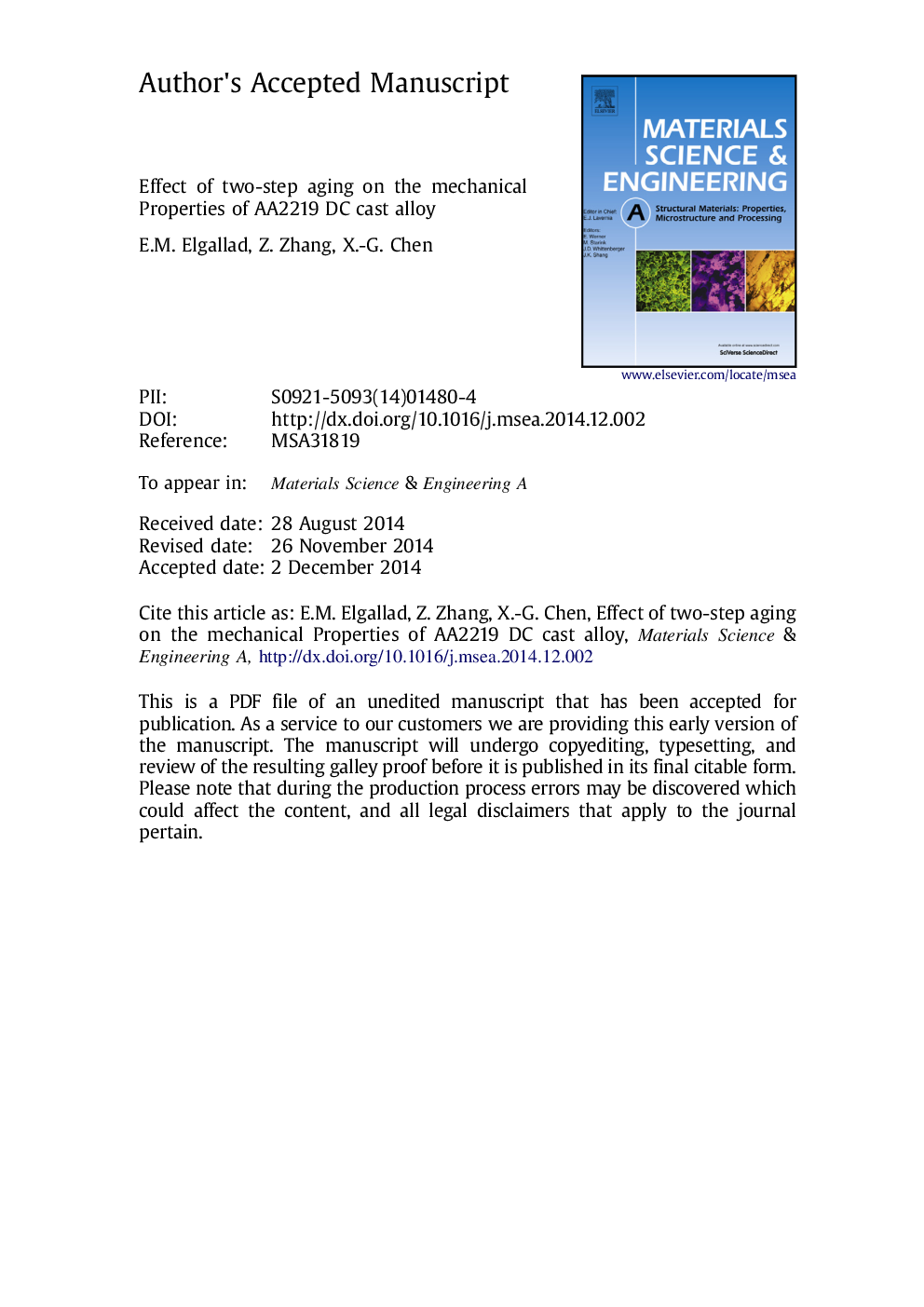| Article ID | Journal | Published Year | Pages | File Type |
|---|---|---|---|---|
| 7979118 | Materials Science and Engineering: A | 2015 | 24 Pages |
Abstract
With its combination of high specific strength, good machinability and excellent weldability, AA2219 direct chill (DC) cast alloy has become a new category of materials for manufacturing large molds for the plastics and automotive industries. The effect of two-step aging on the microstructural evolution and mechanical properties of AA2219 DC cast alloy was investigated. The precipitate microstructure was characterized under different heat treatment conditions using differential scanning calorimetry (DSC) and transmission electron microscopy (TEM). The poor mechanical properties of the air-quenched alloy were attributed to the presence of quench-induced coarse θⲠand θ precipitates, which had very limited contribution to the precipitation hardening during the aging treatment. The two-step aging treatment of the air-quenched AA2219 alloy involved the precipitation of GP zones in the first step followed by their transformation into fine θⳠstrengthening precipitates in the second step, which considerably improved the mechanical properties. After undergoing 120 °C/36 h+190 °C/8 h two-step aging, the hardness, YS and UTS of the air-quenched alloy were increased by 27%, 46% and 15%, respectively, compared with 190 °C/8 h one-step aging.
Related Topics
Physical Sciences and Engineering
Materials Science
Materials Science (General)
Authors
E.M. Elgallad, Z. Zhang, X.-G. Chen,
